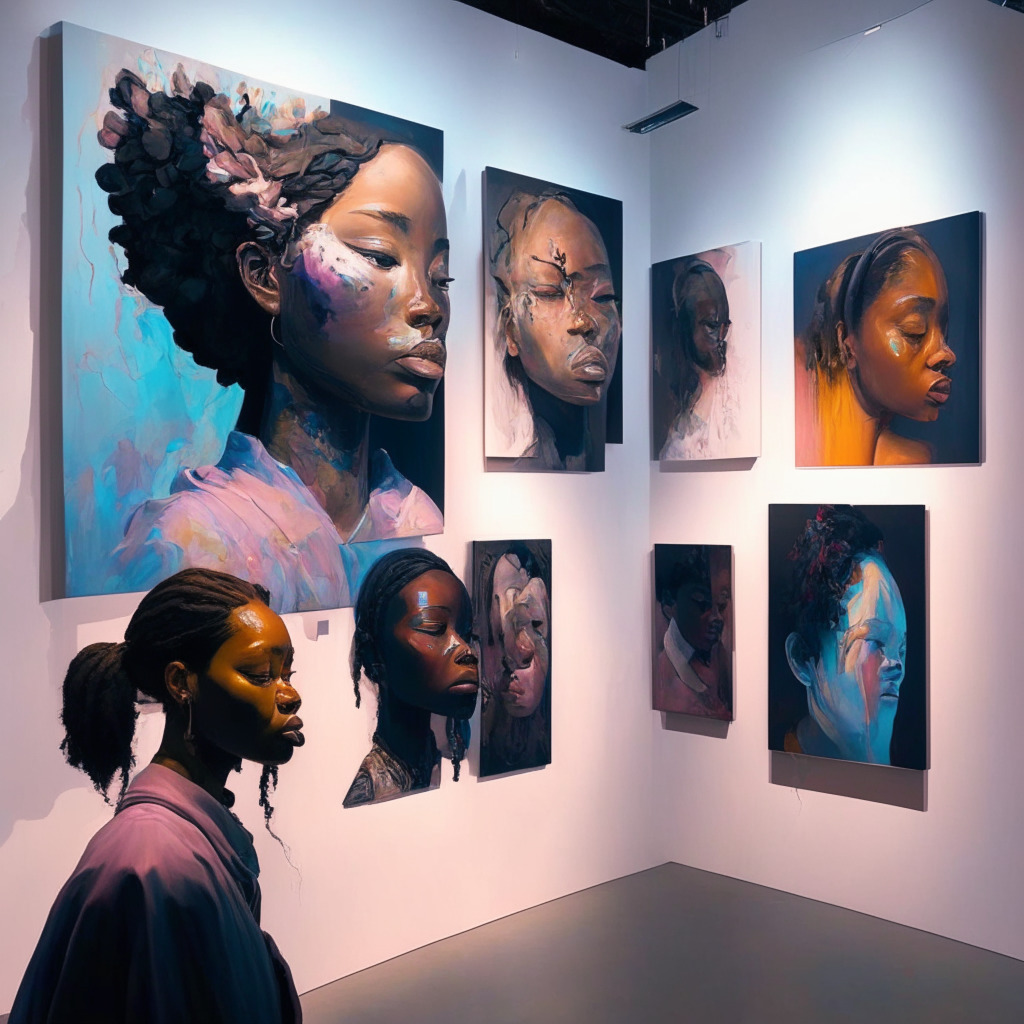The fascinating realm of artificial intelligence (AI) has piqued the interest of many, including Senegalese artist Linda Dounia Rebeiz. In the upcoming online exhibition IN/Visible, curated by Dounia, a thought-provoking question is explored: can AI see people of color? Opening on Feral File, the exhibition showcases the works of 10 black artists, who aim to shed light on AI’s biases when it comes to representing people of color.
Dounia, a multidisciplinary artist herself, explains that the biases of AI, the internet, and Western art history compound to create an environment where people of color often feel absent or misrepresented. She uses Generative Adversarial Networks (GANs) in her work, training them with data from her environment and artistic practice. However, Dounia notes that when she searches for terms like “human” on AI platforms, the results are heavily skewed towards images of white men, whereas searching for “black person” often yields distorted and stereotypical representations.
Artworks featured in the exhibition aim to highlight these issues. For example, Dounia blurs the entire face as a rejection of AI’s output, while Arclight incorporates the distortions into their pieces, resulting in hazy and ill-defined images. Other artists, like Minne Atairu and Serwah Attafuah, create beautifully pleasing works with well-defined faces, but upon closer inspection, inconsistencies in hair representation become obvious.
Dounia strongly advocates an activist approach, emphasizing that AI is not created in an apolitical vacuum. She believes that raising questions about the biases inherent in AI is essential, as algorithms are created by people who may not be aware of these issues. By launching an NFT exhibition that discusses these concerns, Dounia also aims to spread her message within the Web3 ecosystem, often erroneously considered an apolitical space.
The artist also highlights the crucial role of black artists in addressing this issue, as they can help rectify the flaws by utilizing AI tools to create more inclusive representations. Encouraging this collective effort to provide contextual references can ultimately lead to a more democratic portrayal of cultural references.
For those interested in supporting this cause, the first 24 hours of the exhibition’s opening (from 14:00 UTC on 12 June) will offer an opportunity to acquire sets of the 10 featured artworks for 0.55 ETH per set. After this limited period, individual artwork editions will be available for purchase at 0.055 ETH per edition.
In conclusion, AI’s potential to revolutionize various aspects of our lives cannot be denied, but it is crucial for us to remain vigilant and address the biases that exist within the algorithms. The IN/Visible exhibition acts as a timely reminder of our responsibility to ensure equality and inclusivity while embracing the advancements in technology.
Source: Decrypt




